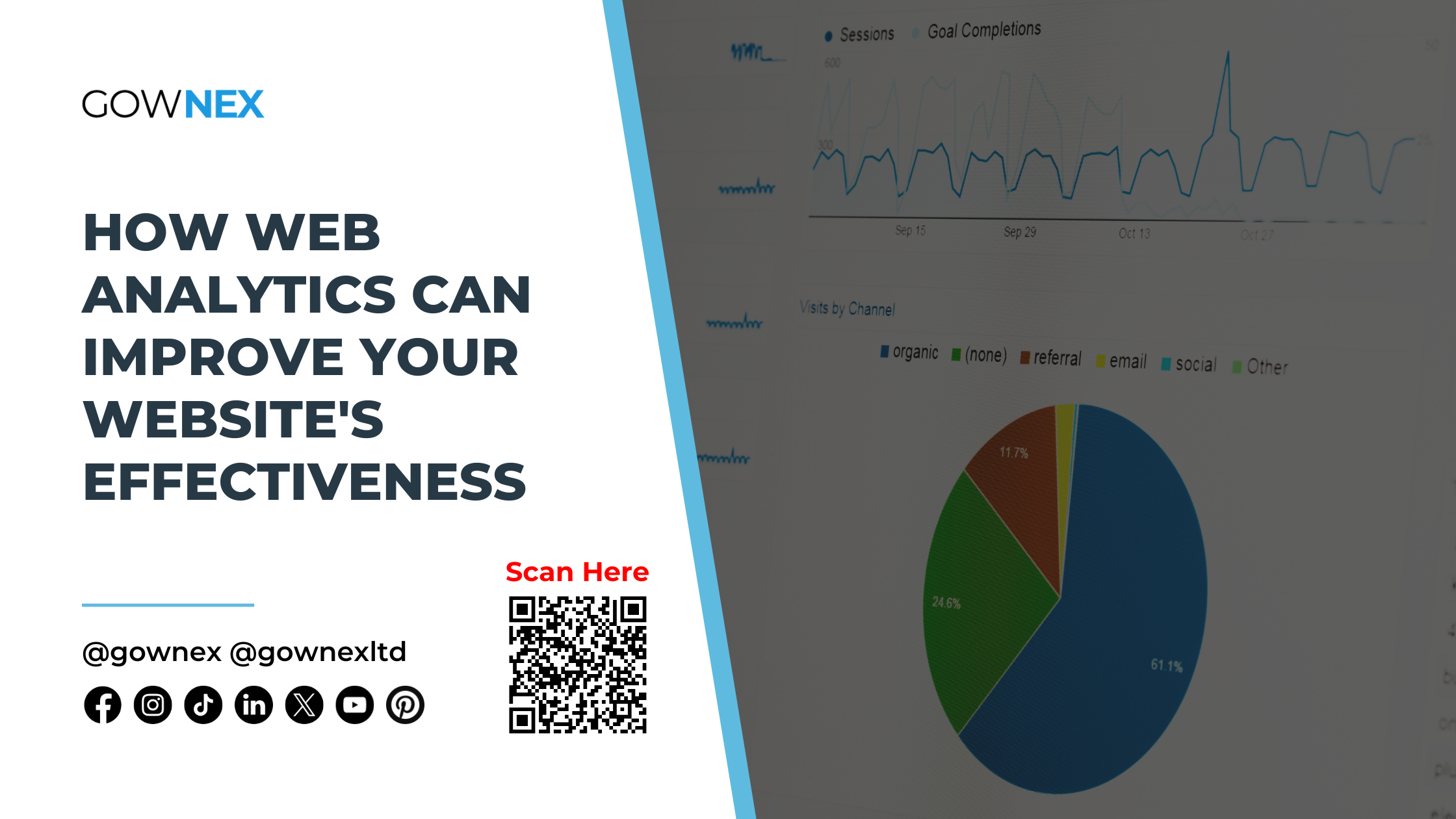How Web Analytics Can Improve Your Website’s Effectiveness
Are you investing time and money into your website but not seeing the results you hoped for? The problem might not be your content or product—it could be a lack of insight into how your site is performing. This is where web analytics comes in.
In today’s digital-first world, your website is often the first touch-point between your brand and potential customers. But without real-time data and actionable insights, you’re left guessing what’s working and what’s not. Fortunately, web analytics provides the clarity you need to optimize performance, improve user experience, and drive meaningful growth.
In this blog post, we’ll explore how web analytics tools can transform your website into a high-performing, customer-converting machine.
Understand Your Audience Better
One of the most powerful benefits of web analytics is its ability to help you understand who your visitors are. Tools like Google Analytics reveal detailed demographic data such as:
- Age
- Gender
- Location
- Language preferences
- Devices and browsers used
Knowing your audience allows you to tailor your messaging, design, and content to match their preferences. For instance, if most of your users are mobile, your design priorities shift to optimizing for smaller screens and fast load times.
Tip: Use demographic and interest reports to create customer personas. These personas can guide your content creation, product development, and ad targeting.
Track Website Traffic and User Engagement
Do you know how many people visit your website daily? Which pages do they visit most? How long do they stay? Web analytics answers all these questions.
With this data, you can:
- Identify high-performing pages
- Detect under-performing content
- Track bounce rates and exit pages
- Analyze time on page and session duration
These metrics are essential for enhancing user experience. If visitors consistently exit on a certain page, it may need better content, faster load times, or clearer calls to action.
Measure the Effectiveness of Your Marketing Campaigns
Imagine running multiple marketing campaigns and not knowing which one actually drove traffic or sales. That’s a common mistake when web analytics isn’t used.
With the right tracking set up, you can monitor:
- Which platforms (social media, email, paid ads) bring the most traffic
- Conversion rates from different traffic sources
- Campaign ROI
This lets you optimize marketing spend by focusing on what works—and cutting what doesn’t.
Tip: Use UTM parameters to track individual campaigns and specific traffic sources in your Web Analytics.
Improve Your SEO Strategy
SEO and web analytics go hand-in-hand. With web analytics, you gain insights into:
- Where your organic traffic is coming from
- Which keywords are bringing users to your site
- Referral sources and backlinks
- Page load speed (a key SEO factor)
If you find that certain pages are getting high impressions but low clicks, it might be time to revise your meta descriptions or title tags.
Set and Track Conversion Goals
Having a website without goals is like running a business without KPIs. Web analytics tools—especially Google Analytics—let you define and track specific conversion goals, such as:
- Newsletter sign-ups
- Contact form submissions
- Downloads
- Purchases
Tracking these goals helps you measure success, identify drop-off points, and optimize the conversion funnel.
Identify User Behavior Patterns
How do visitors behave once they land on your site? What paths do they take? Where do they get stuck?
Web analytics tools allow you to:
- Analyze user journeys
- Spot high-exit or high-bounce areas
- Understand page-to-page navigation
This is invaluable for improving your site architecture and navigation design. For example, if users abandon the site after visiting your pricing page, consider whether the content is clear, compelling, and easy to act on.
Tip: Use behavior flow reports to detect friction points and optimize accordingly.
Make Informed, Data-Driven Decisions
Perhaps the most important advantage of using web analytics is the ability to replace guesswork with data. Rather than making assumptions about what your audience wants or how your site is performing, analytics gives you the facts.
From choosing the right content topics to refining the checkout process, data-backed decisions lead to:
- Higher conversions
- Better engagement
- Improved customer satisfaction
- Faster business growth
The Role of Web Analytics in Long-Term Success
A well-performing website is not just about great visuals or catchy content—it’s about aligning your digital strategy with real user behavior and measurable business goals. Web analytics serves as a digital microscope, revealing the hidden patterns and actionable insights that help your site thrive.
Whether your goal is to generate leads, increase sales, or simply build brand authority, analytics gives you the roadmap to success.
Conclusion: Let Data Lead the Way
If you want a website that works as hard as you do, web analytics is not optional—it’s essential. From understanding your audience to improving SEO, boosting conversions, and optimizing user experience, the benefits are both immediate and long-term.
Don’t let your website be a guessing game. Start using web analytics to measure what matters and make smarter, faster decisions that drive results.
Need help getting started with web analytics or improving your website’s performance? Contact us for a free consultation or analytics audit.
Discover more from Gownex Agency
Subscribe to get the latest posts sent to your email.








